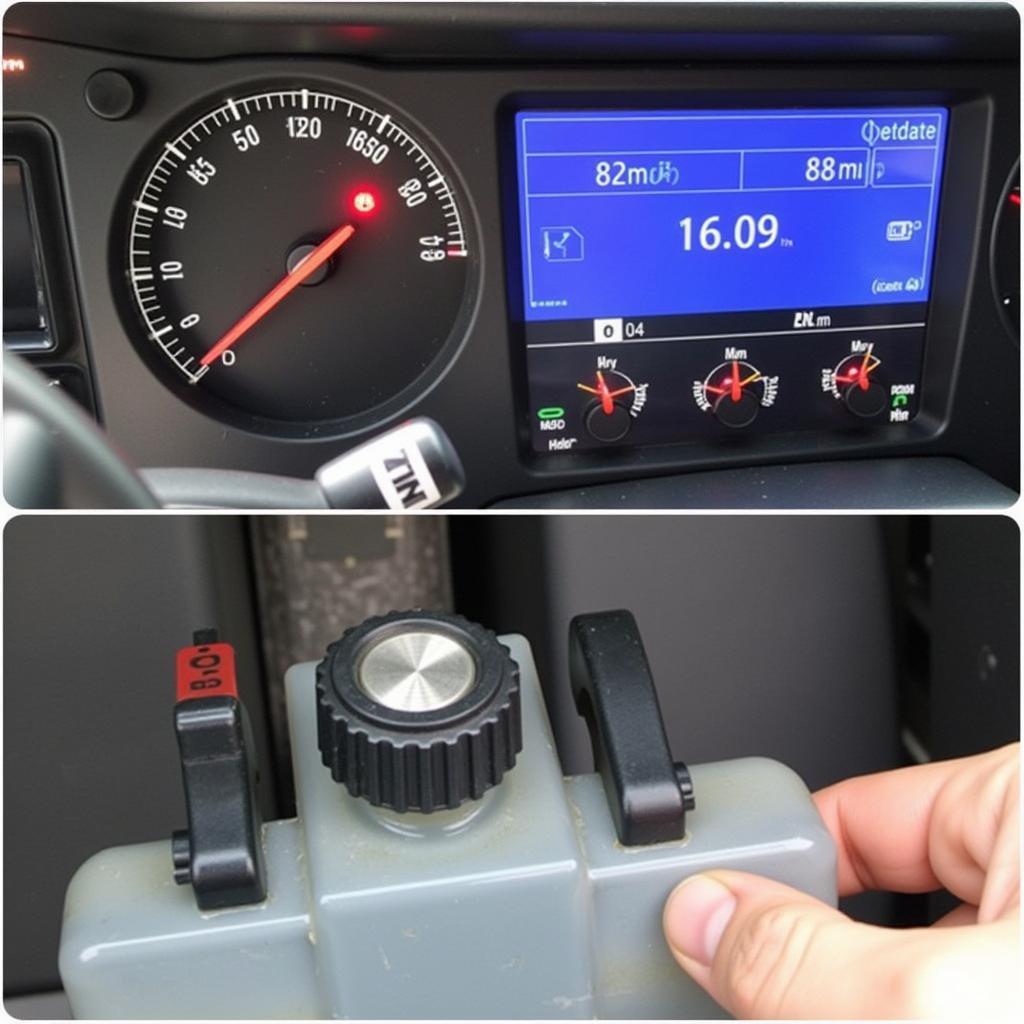The 2016 Hyundai Elantra is a reliable vehicle, but like any car, it can experience issues. One common concern is the illumination of brake warning lights. This comprehensive guide will delve into the various reasons why your 2016 Hyundai Elantra brake warning lights might be on, from simple fixes to more complex problems, empowering you to diagnose and potentially resolve the issue.
Understanding Your Elantra’s Brake Warning Lights
There are several brake-related warning lights on your 2016 Hyundai Elantra dashboard. Understanding what each light signifies is crucial for effective troubleshooting. The most common light is the standard brake warning light, which can indicate several problems, from low brake fluid to a malfunctioning ABS system. Other lights, such as the ABS warning light or the parking brake light, point to more specific issues.
Why is My Brake Light On?
The brake warning light can illuminate for several reasons. Low brake fluid is a common culprit. This could be due to worn brake pads or a leak in the brake system. A faulty brake light switch can also trigger the warning light, even if the brakes themselves are functioning correctly. Additionally, problems with the ABS system, such as a malfunctioning sensor, can activate the warning light.
What Does the ABS Light Mean?
The ABS light specifically indicates a problem with the Anti-lock Braking System. This system prevents wheel lockup during hard braking, enhancing control and stability. A lit ABS light might signal a faulty ABS sensor, a problem with the ABS module, or low brake fluid affecting the ABS system’s operation.
Parking Brake Light Stays On
If your parking brake light stays on even after releasing the parking brake, it could be due to a faulty parking brake switch or a stretched or damaged parking brake cable. In some cases, it could also be related to the brake fluid level.
Diagnosing the Problem
Diagnosing the cause of your illuminated brake warning lights often involves a systematic approach. Start by checking the brake fluid level. If it’s low, top it off and monitor it closely for further drops, which could indicate a leak. Next, inspect your brake lights. If a brake light is out, replacing the bulb might resolve the issue. If these simple checks don’t solve the problem, it’s time to delve deeper.
Checking Brake Fluid Level
Locate the brake fluid reservoir under the hood. The reservoir is usually a translucent plastic container with markings indicating the minimum and maximum levels. Ensure the fluid level is within the recommended range.
Inspecting Brake Lights
Have a friend or family member press the brake pedal while you inspect the brake lights. Ensure all brake lights, including the high-mounted stop lamp, are functioning correctly.
Further Diagnostics
If the problem persists, you might need specialized diagnostic equipment. A professional mechanic can use a scan tool to read the trouble codes stored in your Elantra’s computer, pinpointing the exact cause of the warning light.
Remote Diagnostics and Programming Solutions
In today’s technologically advanced automotive landscape, remote diagnostics and programming offer convenient and efficient solutions. Certified technicians can access your vehicle’s systems remotely, diagnose the issue, and even perform software updates or programming fixes, potentially saving you a trip to the repair shop.
“Remote diagnostics is revolutionizing the way we address vehicle issues,” says automotive expert, David Miller, ASE Certified Master Technician. “It’s a powerful tool for quickly identifying and resolving problems, often without the need for a physical inspection.”
How Remote Diagnostics Works
Remote diagnostics utilizes specialized software and hardware to connect to your vehicle’s onboard computer. Technicians can then read diagnostic data, analyze system performance, and identify the root cause of the problem.
Benefits of Remote Diagnostics
Remote diagnostics offers several advantages, including faster diagnosis, reduced downtime, and cost savings. It can also be particularly beneficial for addressing software-related issues that might require specialized programming or updates.
 Remote Diagnostics Being Performed on a 2016 Hyundai Elantra
Remote Diagnostics Being Performed on a 2016 Hyundai Elantra
Conclusion
Addressing illuminated brake warning lights on your 2016 Hyundai Elantra requires a careful and systematic approach. From checking the brake fluid level and brake lights to utilizing advanced remote diagnostics, understanding the possible causes and solutions empowers you to take the necessary steps to ensure your safety and the proper functioning of your vehicle. Contact a qualified technician or explore remote diagnostic options to get your 2016 Hyundai Elantra back on the road safely.



